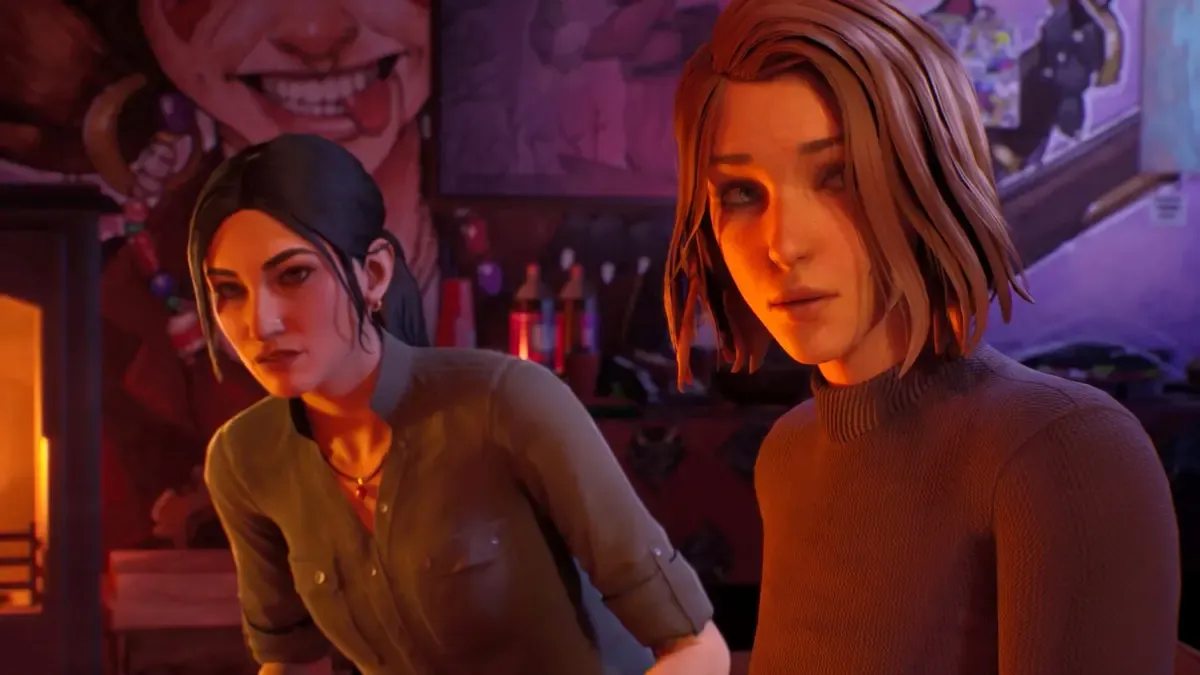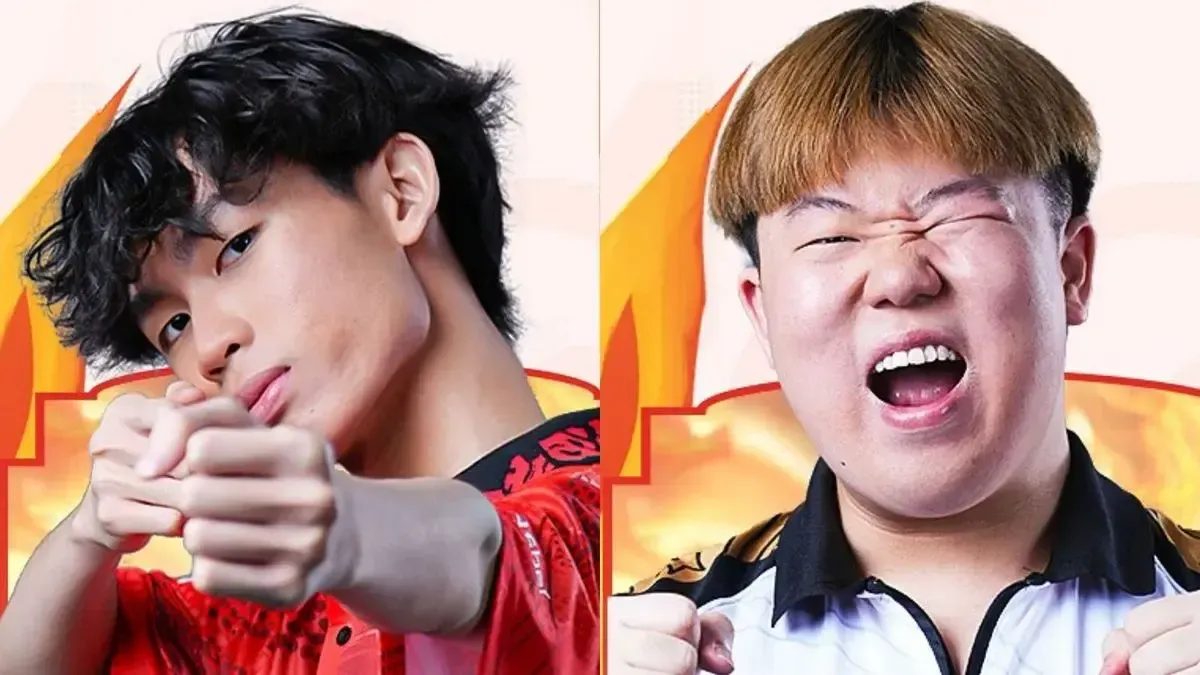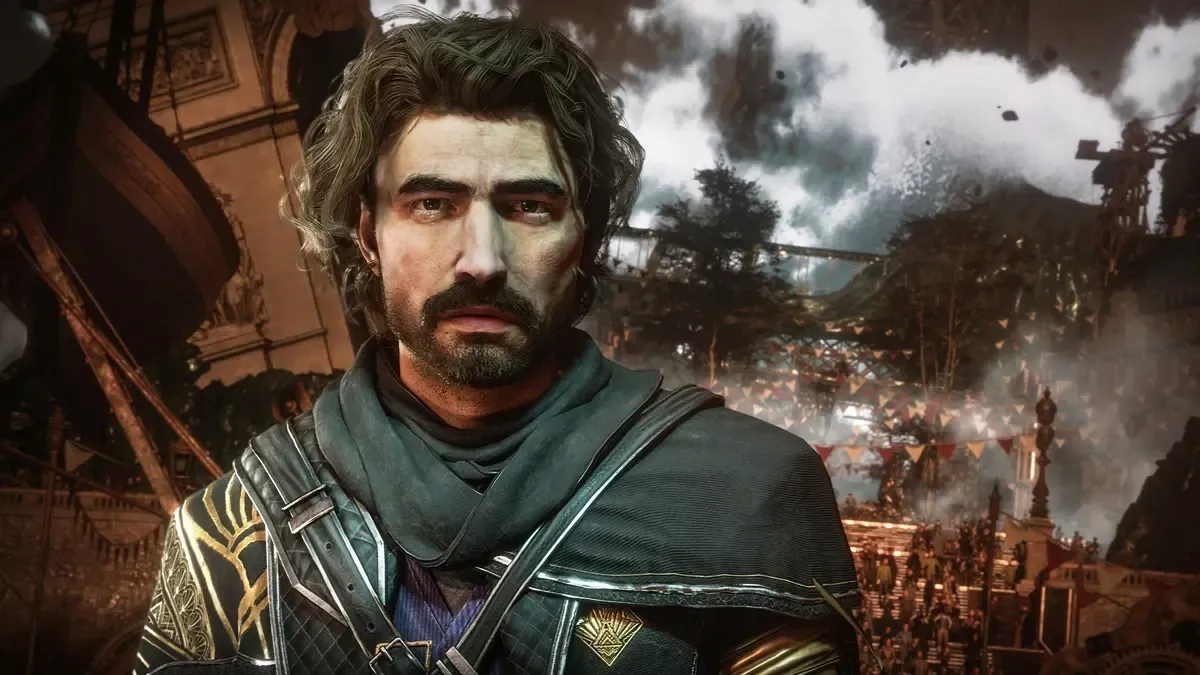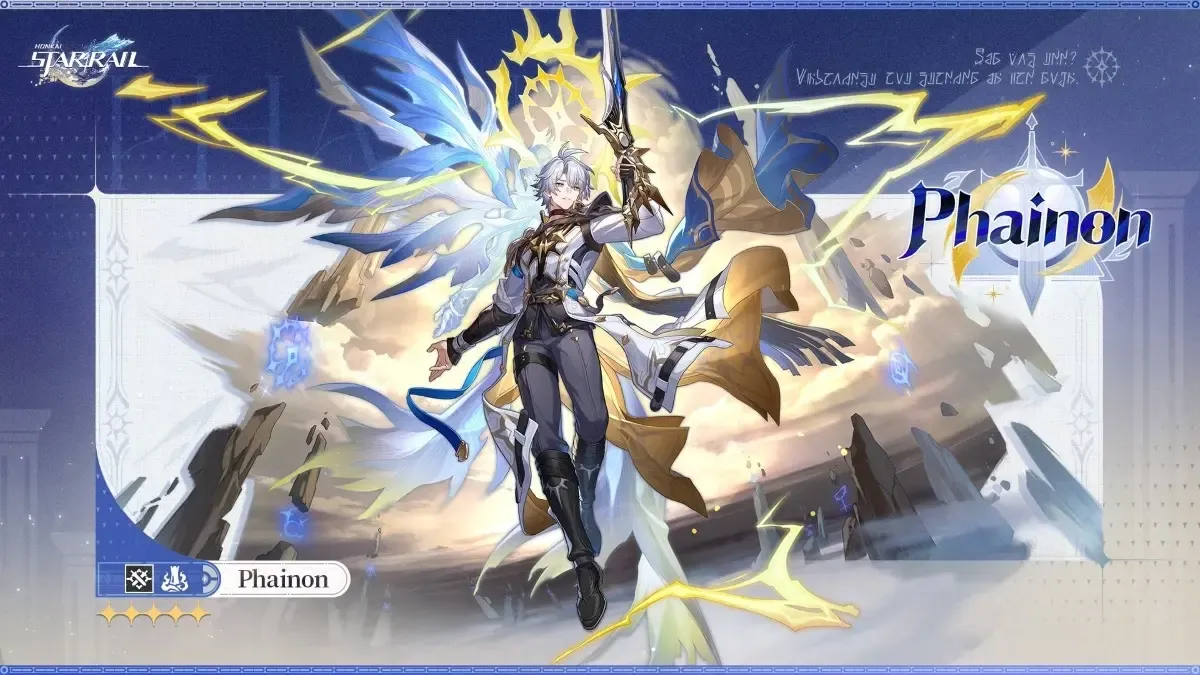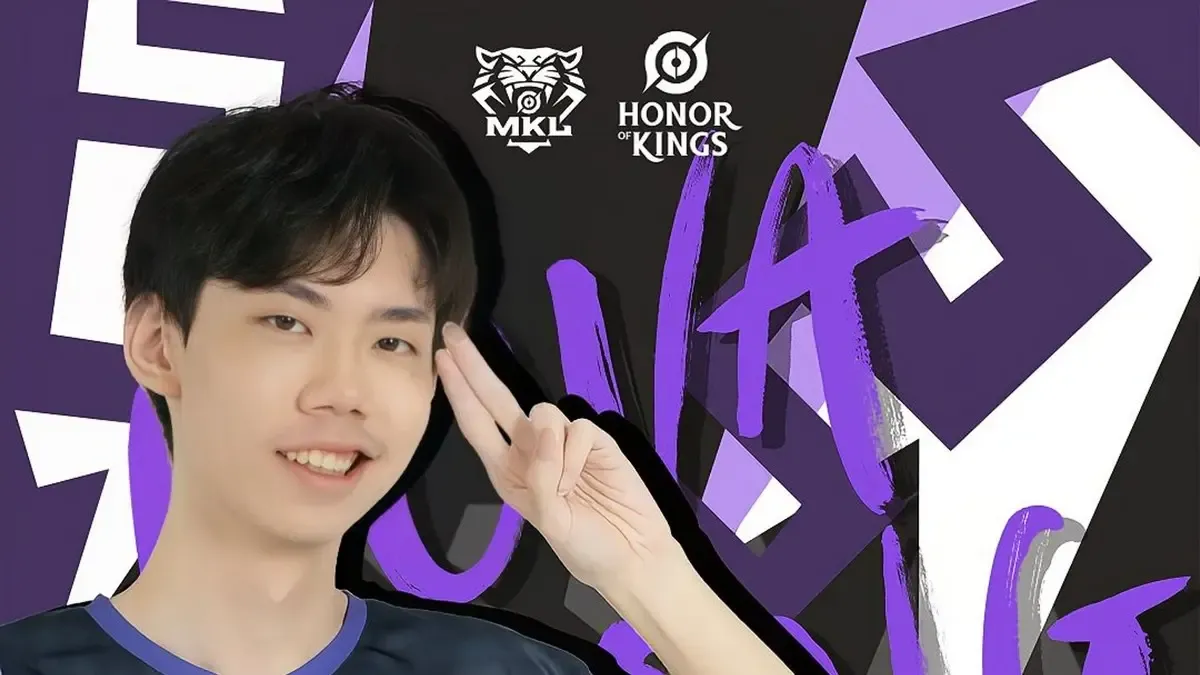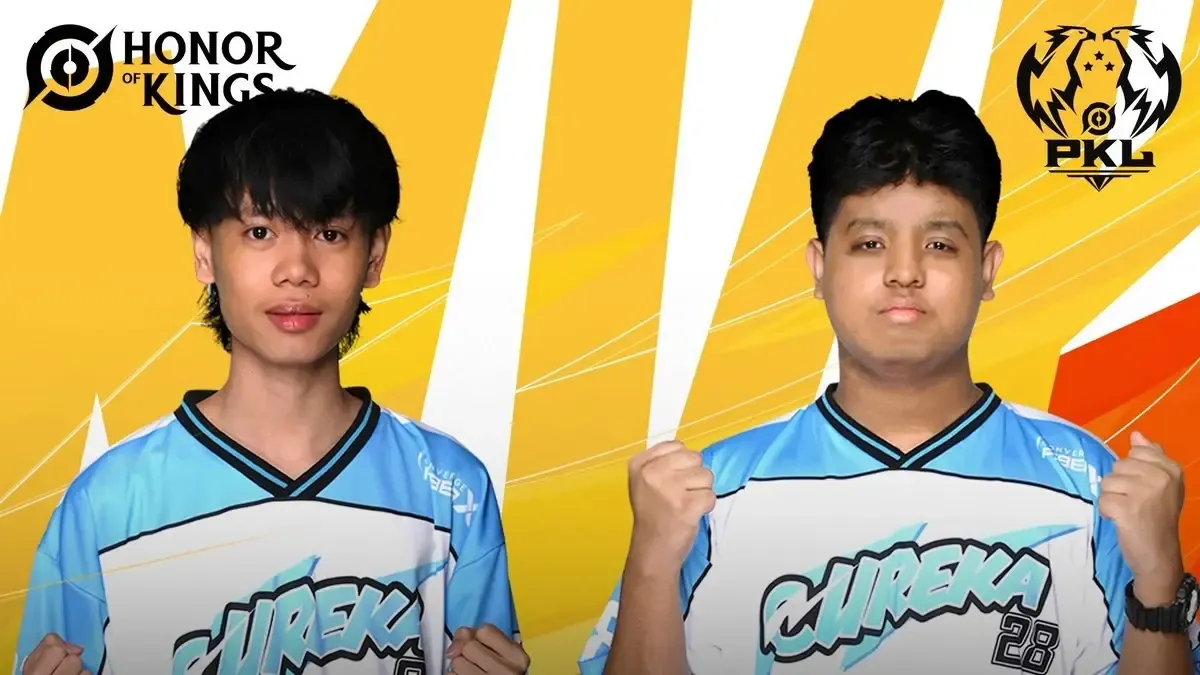Image: Square Enix
This fan service-laden Life is Strange sequel might appeal to newcomers more than longtime fans, weirdly enough.
Life is Strange: Double Exposure sees a franchise go full circle, returning to its original time-travelling protagonist Max Caulfield as she attempts to solve yet another murder mystery. This time, however, original Life is Strange developer Don’t Nod isn’t helming things, having already moved on from the franchise following the release of Life is Strange 2. Instead, new series developer Deck Nine is stepping up to portray these beloved characters in a new light, with no involvement from their original creators whatsoever.
Sadly, the result is a mixed bag. While this sequel allows fans to connect with an older and more interesting version of Max, its meandering whodunit plot gets too twisty for its own good before culminating in one of the weakest climaxes of the franchise to date.
What has Max Caulfield been up to for the last 10 years?
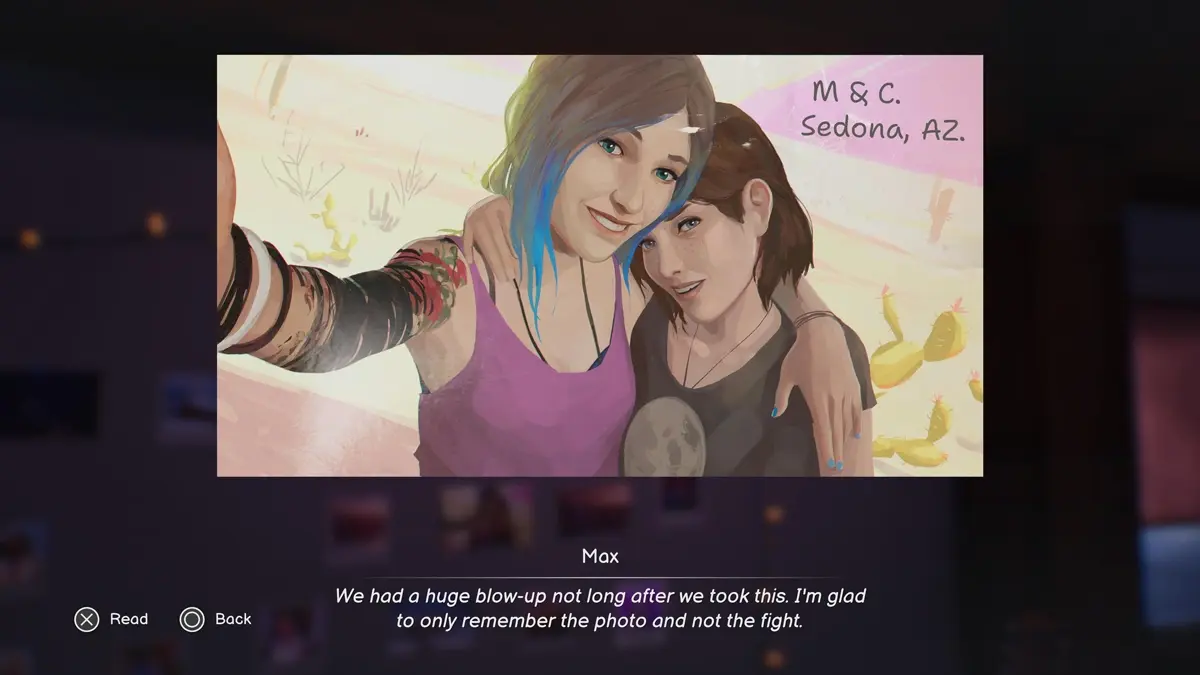
Life is Strange: Double Exposure is set 10 long years after Life is Strange (2015), which ended with Max Caulfield using her time travel powers to either destroy an entire town or save her best friend/girlfriend Chloe Price – the specifics of which depend on the choices players made throughout the game. Either way, Max is having a lot of trouble reckoning with tremendous guilt over her past actions in the present day.
Having left her powers unused for years, Max settles down in the prestigious Caledon University as its resident photographer. She’s done quite well for herself despite severing herself from her past in every other way. Not a single soul from Life is Strange (2014) besides Max returns in this game, but you can catch fleeting glimpses of them in Max’s phone messages or on her social media accounts.
The game catches up to the player’s choices early on by asking them whether they saved Chloe or Arcadia Bay. I chose to save Chloe, but was told that the free spirited rebel had dumped Max via – of all things – a handwritten letter.
All this is to say that Double Exposure will not please fans of Max and Chloe’s dynamic from the original game, as that element has been purposefully excluded, in a way, to serve the journey Max goes on here.
When we first see Max in Double Exposure, she’s begun to form a close circle of friends in a fresh setting, but she’s struggling to put down roots. There’s this uncanny feeling that another storm might arrive to tear everything she loves away from her. She keeps her tragic past hidden from her friends and is thusly loved, but never fully seen.
When a sudden murder hits close to home on Caledon grounds however, Max returns to her old snooping instincts only to discover that her powers have changed greatly since leaving Arcadia Bay.
Time and relative dimension in space
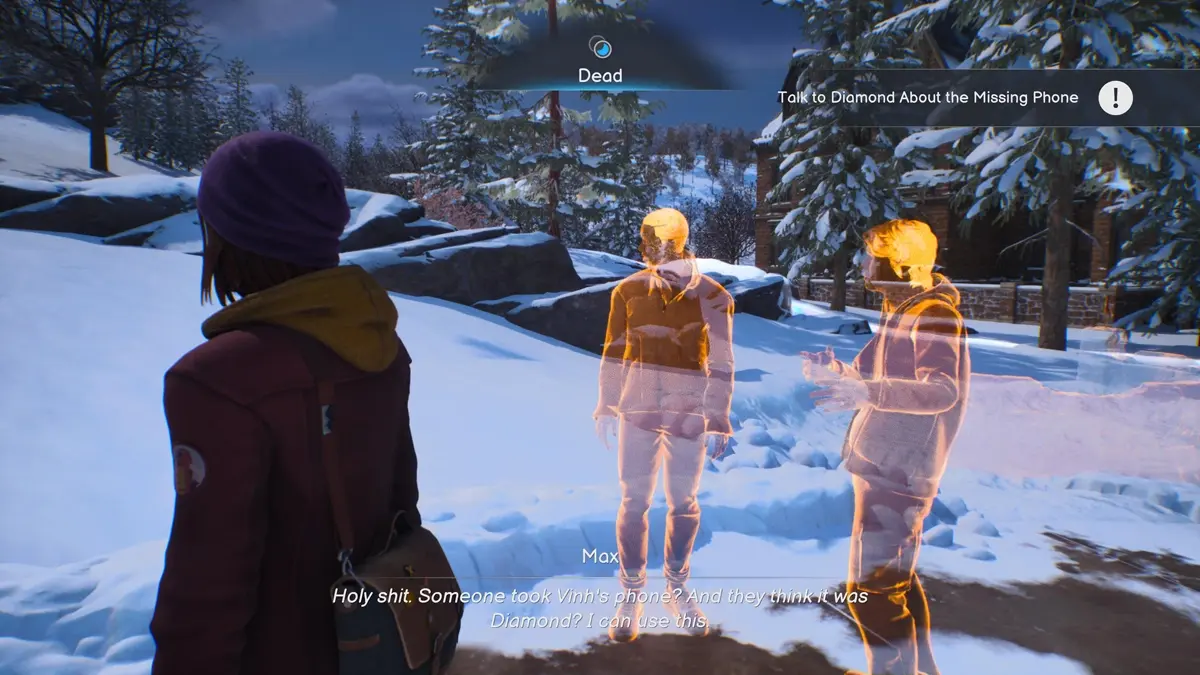
Life is Strange (2015) revolved around Max Caulfield using her time-rewinding abilities to create mini-time loops, allowing her to foresee events before they happened and manipulate them in her favour. Double Exposure opts for a very different powerset; one more in line with Max’s adventures in Titan Comics' Life is Strange graphic novels. Here, Max has traded in her time-warping abilities for interdimensional travel. When one of her friends is wrenched from this mortal coil, she discovers a path into two timelines: one where her friend lived, and another where they died.
Double Exposure’s gameplay then unfolds as such: for Max to find the perpetrator of this heinous crime, she must travel between both timelines to find clues and enlist the help of her friends, and variants of her friends, while pushing the limits of her new abilities. The game does an admirable job of making these two timelines feel as distinct as possible, too.
The so-called Dead timeline is visually cold and grey, its music sombre and mellow and its people introspective in their grief. The Alive timeline cuts a heavy contrast with warm and bright splashes of colour, loud pop music and cheerful characters going about their day.
This is a surprisingly thoughtful way to explore the grief that follows sudden and tragic loss – in one universe, Max’s friends aren’t shouldering the burden of losing one of their own, so they remain jubilant and carefree. In the other, the loss of a Caledon student has not only left her friends in various states of shock and grief, but has impacted the campus to the point that it physically appears necrotic and lifeless. Max is solely sensitive to both timeline’s differences, and often has to switch between both timelines to gain information, find key items and commit sundry other shenanigans in the pursuit of her amateur detective work.
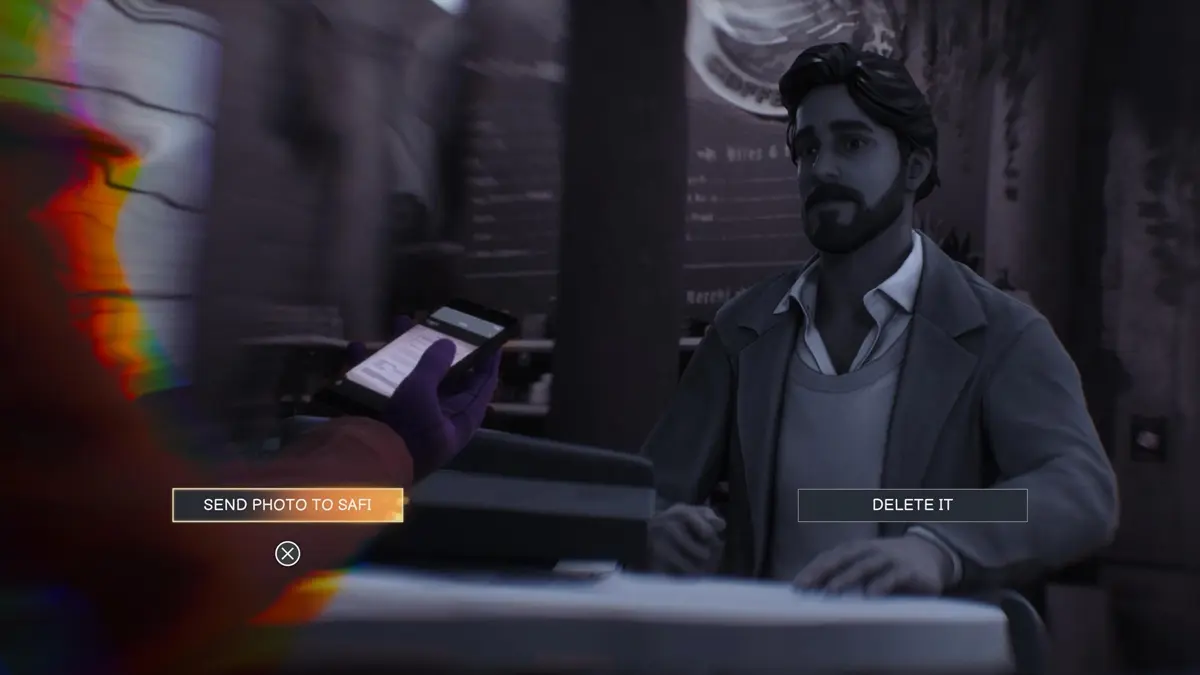
While Max’s new powers bring different elements of gameplay to the table in Double Exposure, the rest of the game feels enticingly familiar to Life is Strange fans. This is still a cosy adventure game that relies on choices and consequences to portray its snaking narrative, the twists and turns of which ever so slightly depend on Max’s actions. I say ever so slightly, because Double Exposure features the least impactful choices I've seen in a Life is Strange game to date.
At every turn, it’s immediately evident which choices lead to a ‘good’ or ‘bad’ ending, and all of them compound to a relatively similar conclusion of the main story.
Life is Strange 2 handled its narrative choices and consequences much better, with not only multiple different endings available to the player, but also perceivable differences in the way each one of its chapters played out, and how its cast behaved in accordance with the choices made. Double Exposure seemingly only has one story and one ending to offer, its multidimensional trickery seemingly making it too complex for players to be offered anything more than slight variations of certain cutscenes.
The Bay or Bae ending Life is Strange (2015) rose to iconic status due to its emotional difficulty – by the time players had to choose between saving Chloe or Arcadia Bay, they knew that the guilt that would follow either choice would be immense. Double Exposure comes nowhere close to replicating that. In fact, it appears reluctant to even try.
The real murder victim here is the in-game audio
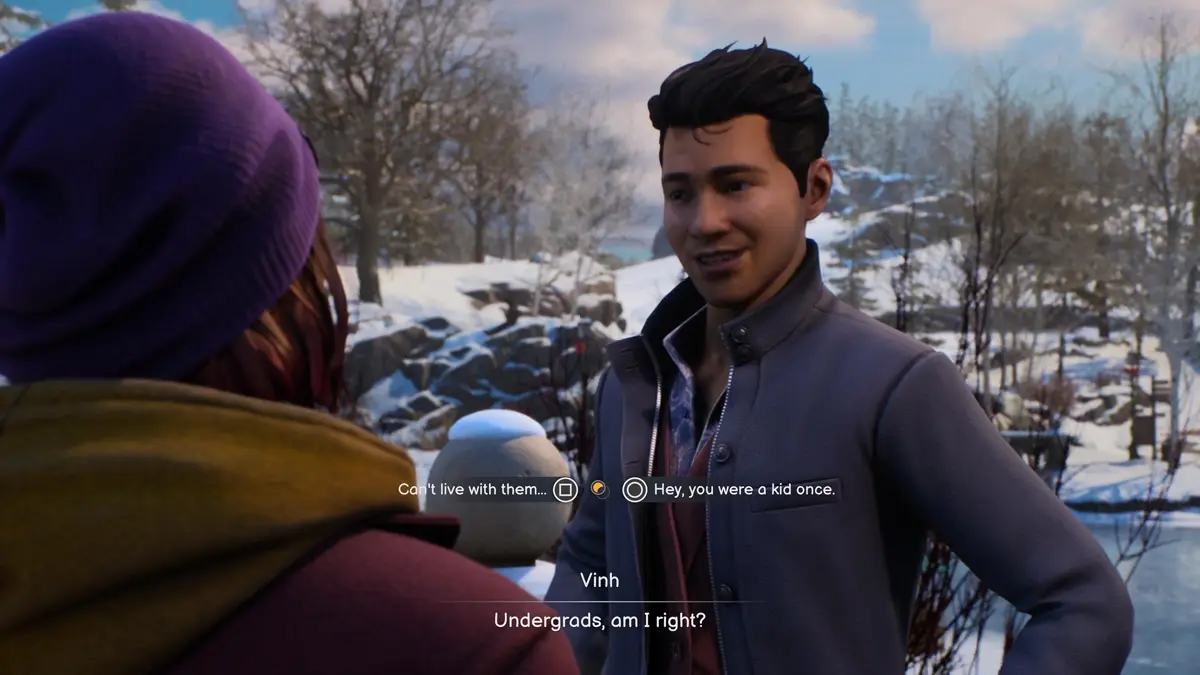
Life is Strange: Double Exposure offers a nostalgic throwback to Life is Strange 2, in that it's buggy as hell on consoles. Truth be told, it’s been some time since I played a video game with audio issues this severe.
For example, several in-game cutscenes played out with one character speaking at a normal volume, while their partner spoke in muffled whispers, as if a pillow was being held over their head. Conversations can also randomly play out without any form of in-game music, leading to dialogue cutscenes that come off stilted and awkward.
Worse still are the recurring audio issues relating to in-game dialogue volume. I had to raise and lower the volume of my soundbar constantly throughout my playthrough, simply because in-game audio would randomly begin peaking for extended periods of time before returning back to normal. One second Max is whispering, and the next she’s yelling.
Other funny little bugs include: Max having to stand in a very specific spot just to listen to a podcast playing out loud from a nearby tablet, and two NPCs having a conversation where one would speak normally while the other would respond in a series of loud garbled static noises.
My game also froze up at a certain point when I paused while Max was looking at her phone messages, and I noticed lighting issues that led to certain characters being cast in shade despite standing in broad daylight. Max’s waxy hair can also fall victim to some strangely erroneous hair physics – sometimes, it bobs around realistically during movement, and other times it stays plastered to her scalp.
Besides these bugs however, I do want to mention that Double Exposure is just as visually striking as one would expect a Life is Strange game to be. It's a lot of fun to explore these environments and inspect random objects in the wild, simply because all of them feel so warmly inviting.
There's some good stuff here too
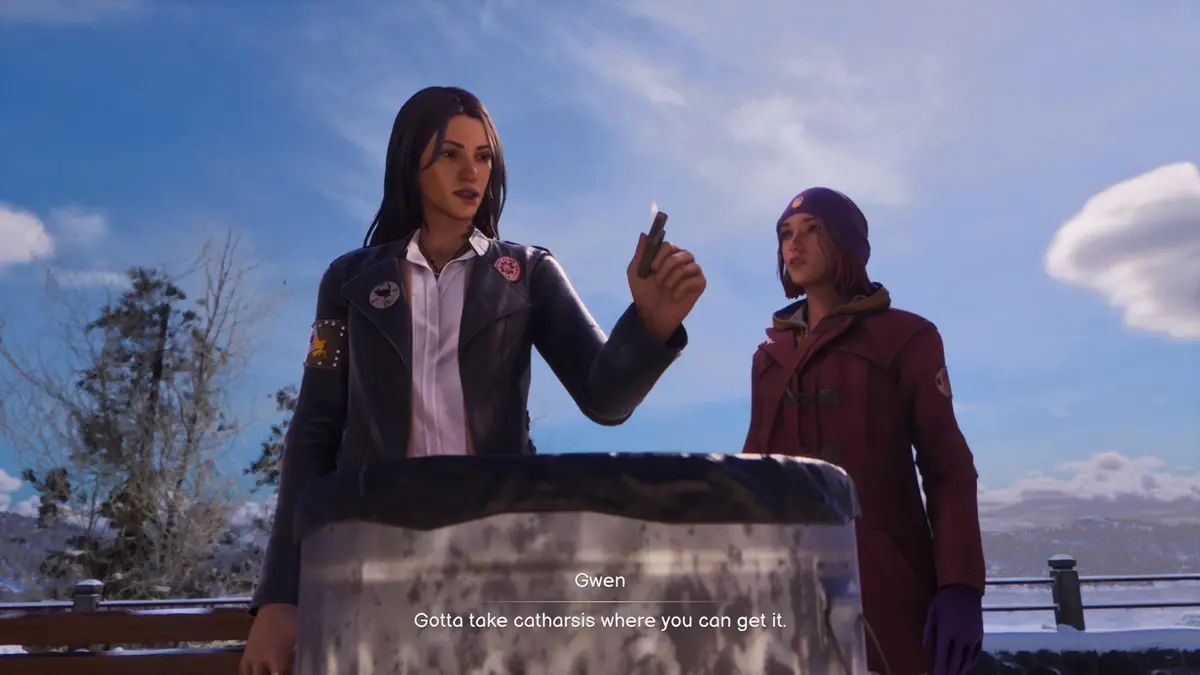
While Life is Strange: Double Exposure is undeniably flawed, it remains one of my favourite gaming experiences this year (despite the score below indicating otherwise). This is partially due to the absolute singularity of the Life is Strange franchise – there are very few other games that mimic its particular brand of adventure gameplay.
At times, Double Exposure actually feels like the apex of this series – with realistic and believable motion capture work that breathes life into the game’s genuinely captivating performances, a gorgeous soundtrack by Tessa Rose Jackson underlining its more emotional beats, and a complex new cast of characters.
Hannah Telle returns to her role as Max Caulfield for this title, and it’s worth playing for her performance alone – watching her add layers to the original series protagonist with a far better and more convincing performance is a real treat. Max is older and more confident thanks to a decade of real-world experiences, but that doesn't mean that she's prepared for what this journey puts her through. Telle adds a critical layer of believability to her role, keeping Max the dorky photographer we all know and love while also ageing her up in attitude and posture.
This was true of Deck Nine’s Life is Strange: True Colors too: the game’s performances are one of its strongest points. Double Exposure's entire plot arguably hinges on Max’s relationship with her best friend Safi, and it’s important that players buy into their shared bond for heavier story beats to land as intended. Fortunately, Hannah Telle and Olivia AbiAssi (Safi) share such an easy chemistry that it’s easy to believe that they’re the best of friends, and the latter’s charming portrayal of the tempestuous person Safi is helps a frankly far-fetched ending fall slightly within reason.
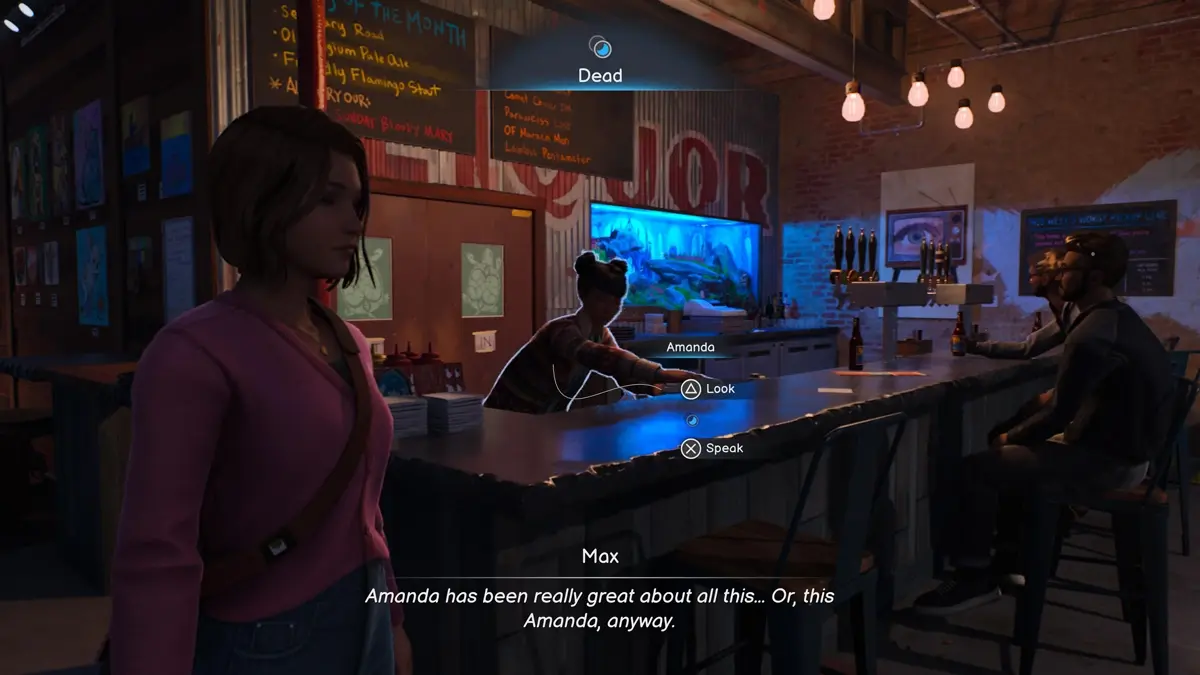
Deck Nine knows how to craft a Life is Strange thriller, because the ingredients are all here: the buildup to a shocking Caledon University murder feels appropriately grim and suspenseful, and characters react to that event in ways that feel authentic and human.
The murder mystery unravels at a satisfying pace throughout the game’s early chapters, linking seemingly throwaway clues and characters to a much grander plot. It’s only at the very end that the game drops the ball, offering a half-baked and nonsensical resolution to its slow-burn mystery, while arbitrarily expanding on Max’s abilities in ways that don’t feel earned, and again, don't make a whole lot of sense.
Fans of Life is Strange's romance options will also have to contend with not only the loss of Chloe Price as a secondary protagonist, but the game’s half-hearted approach to romance in general.
For example, Amanda, an in-game bartender Max can choose to romance, is written and portrayed with an endearing level of empathy and wit. However, players can only interact with her outside of the bounds of Max’s investigation in a single story chapter – the rest of the time, she either acts as window dressing or a plot device. Romancing characters has become a key tenet of this franchise – just look at Max and Chloe – and Deck Nine did a great job of it in True Colors, so it’s particularly confusing that it missed the mark here.
Verdict
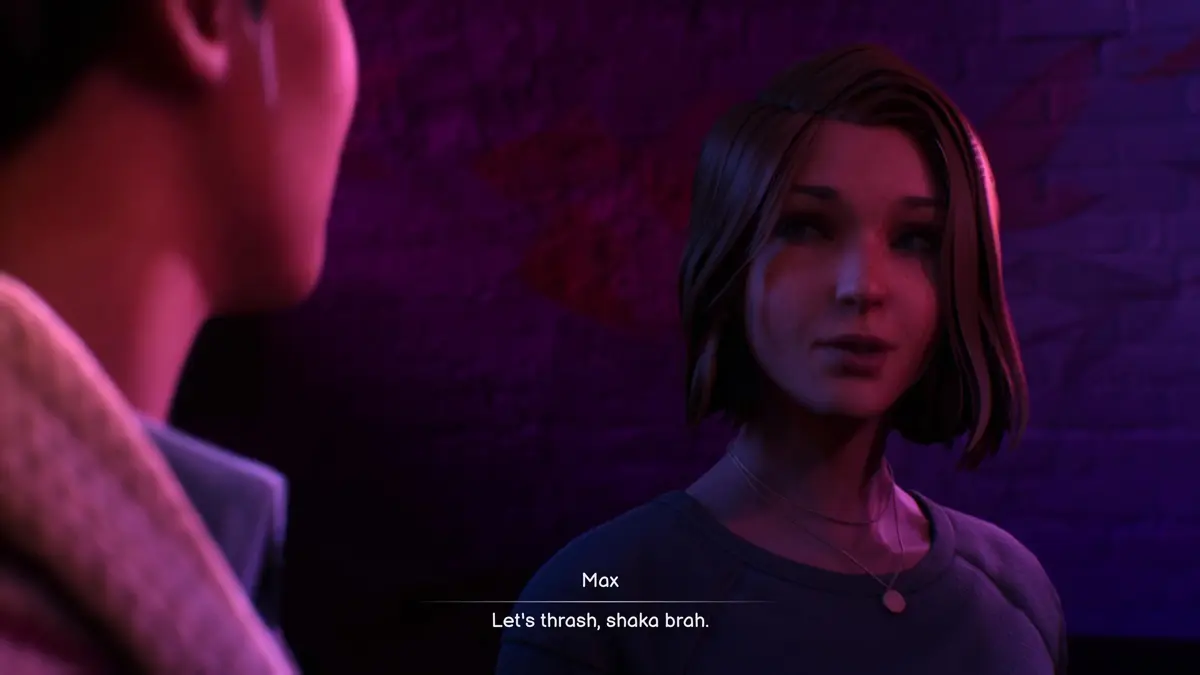
Life is Strange: Double Exposure ticks all the boxes for a solid adventure game, with a sprawling mystery, beautifully realised environments and fantastic performances from the main cast. Despite all this, fans will find it a categorical downgrade from previous entries. Choices that lead to beguilingly similar outcomes and a plot that only gets more nonsensical as it progresses towards a lackluster climax are the least of it. Those who were hoping for another adventure with Max and Chloe will be left disappointed, to boot.
However, I prefer to meet this story on its own terms, rather than pine for a game Deck Nine deliberately chose not to make. Double Exposure’s problem is not that it omits Max and Chloe’s dynamic, but rather that it fumbles the core appeal of this entire series. Shadowy mysteries, clever twists and edgy narratives all wrapped up in a cosy and pensive setting are what make Life is Strange stories great. Deck Nine has all of these elements assembled, but executes on them poorly.
Newcomers might enjoy Double Exposure for what it is, but that’s only because they don’t know any better yet.
Life is Strange: Double Exposure is out now on Nintendo Switch, PlayStation 5, Xbox Series X|S and PC. We received a copy of the game for this review.

